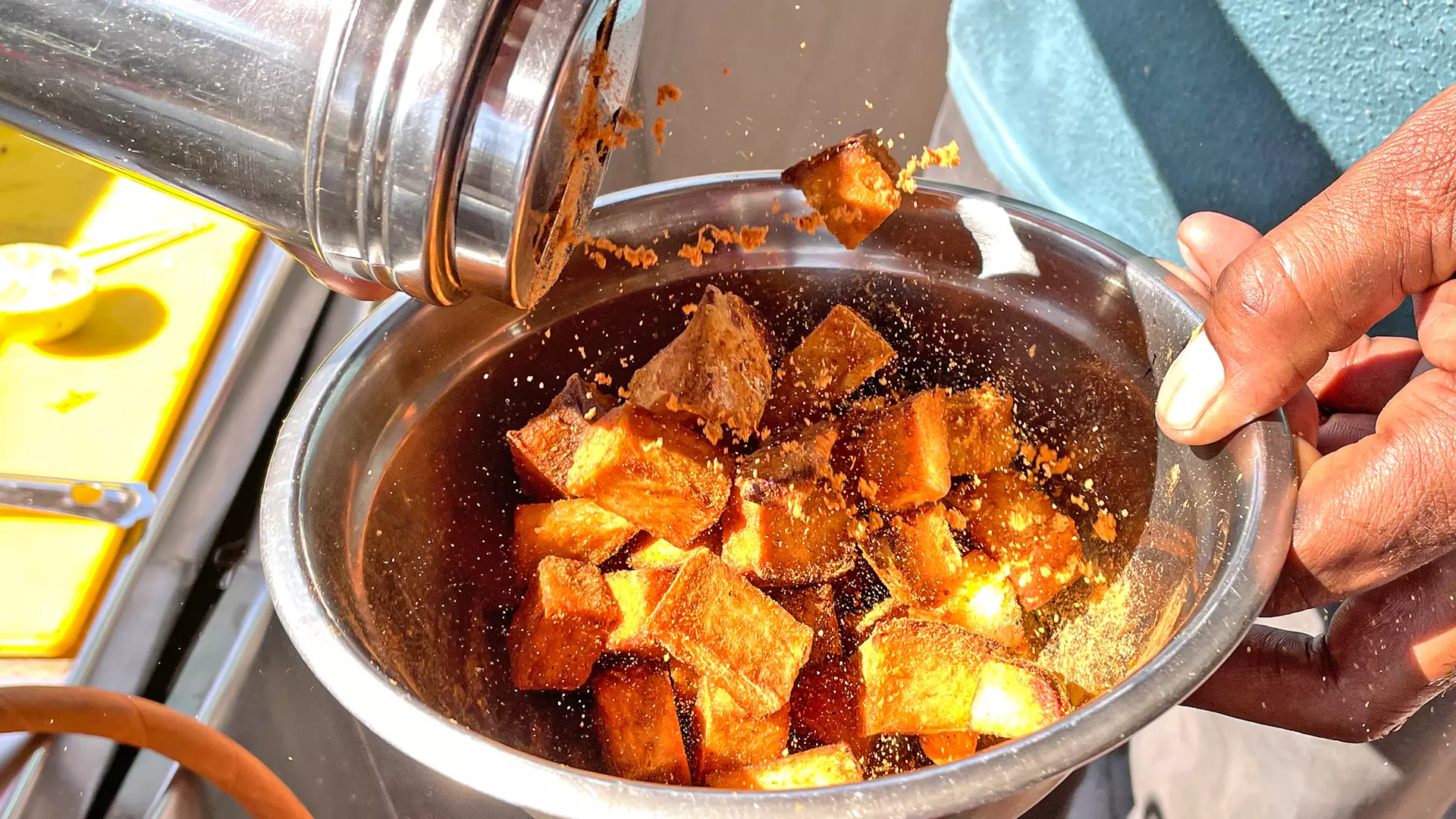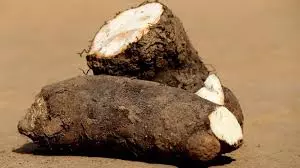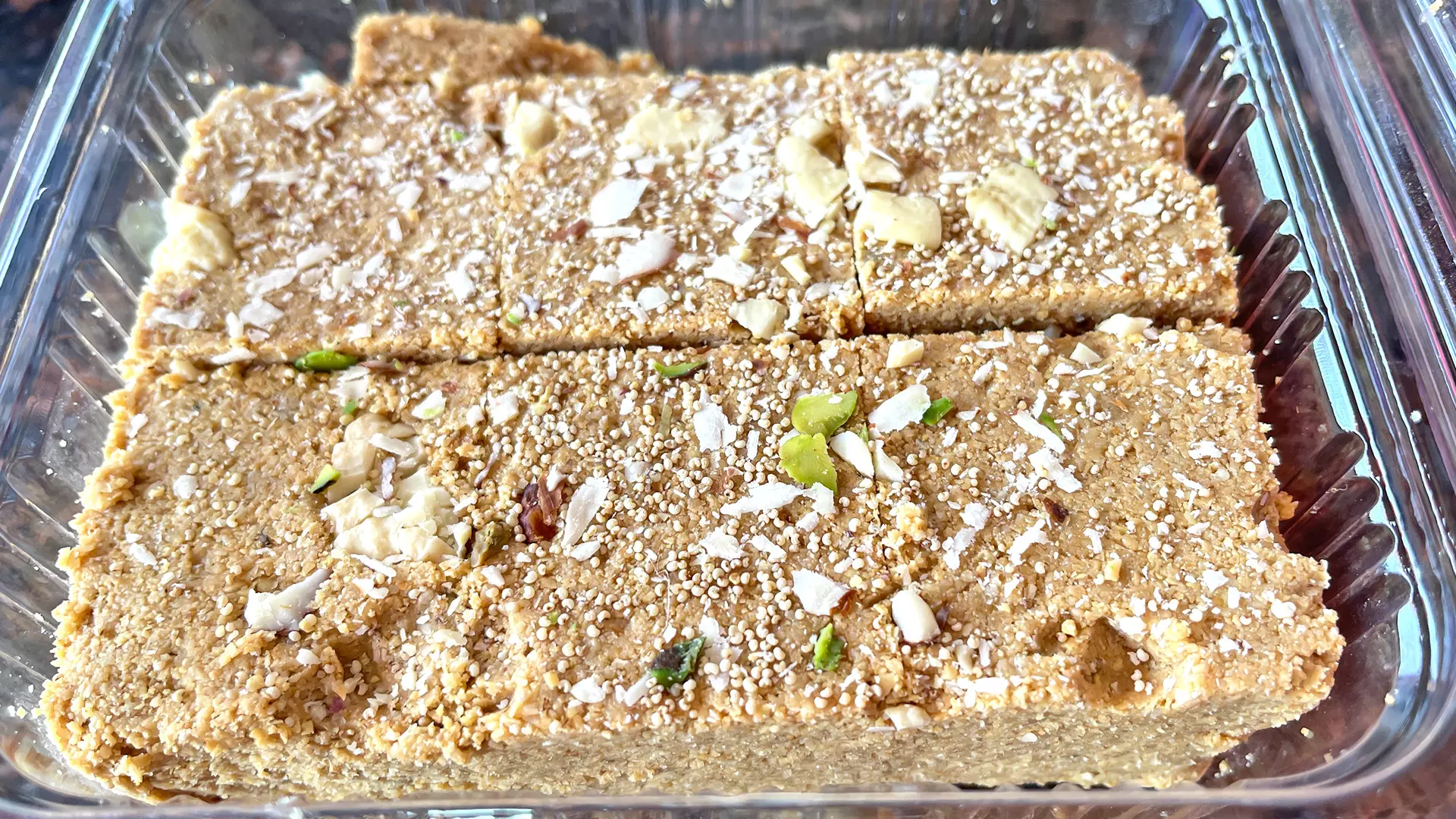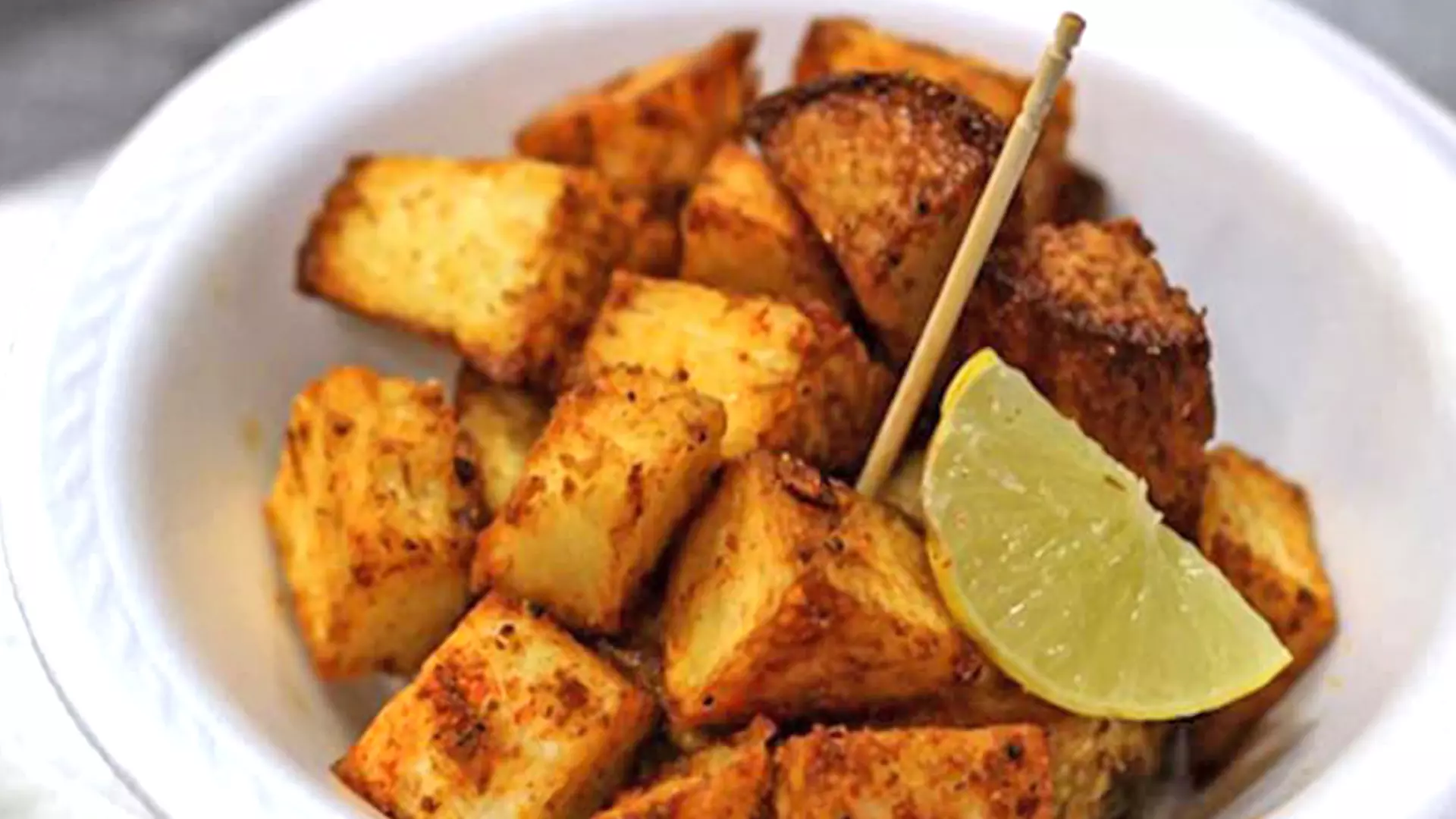
- Home
- India
- World
- Premium
- THE FEDERAL SPECIAL
- Analysis
- States
- Perspective
- Videos
- Sports
- Education
- Entertainment
- Elections
- Features
- Health
- Business
- Series
- In memoriam: Sheikh Mujibur Rahman
- Bishnoi's Men
- NEET TANGLE
- Economy Series
- Earth Day
- Kashmir’s Frozen Turbulence
- India@75
- The legend of Ramjanmabhoomi
- Liberalisation@30
- How to tame a dragon
- Celebrating biodiversity
- Farm Matters
- 50 days of solitude
- Bringing Migrants Home
- Budget 2020
- Jharkhand Votes
- The Federal Investigates
- The Federal Impact
- Vanishing Sand
- Gandhi @ 150
- Andhra Today
- Field report
- Operation Gulmarg
- Pandemic @1 Mn in India
- The Federal Year-End
- The Zero Year
- Science
- Brand studio
- Newsletter
- Elections 2024
- Events
Gajak and Garadu: How crisp, golden morsels warm up winters in Indore

As temperatures plummet to a bone-chilling 10 degrees in Madhya Pradesh, the streets of Indore transform into a mosaic of winter survival and epicurean treats. Indore's residents emerge like a living tableau of winter preparedness. Woollen sweaters are pulled tight, monkey caps are drawn low, creating a uniform armour against the cold. In this moment, the unassuming warmth of street-side...
As temperatures plummet to a bone-chilling 10 degrees in Madhya Pradesh, the streets of Indore transform into a mosaic of winter survival and epicurean treats. Indore's residents emerge like a living tableau of winter preparedness. Woollen sweaters are pulled tight, monkey caps are drawn low, creating a uniform armour against the cold. In this moment, the unassuming warmth of street-side snacks becomes a symbol of a city celebrated as India’s street food capital. Street corners come alive with steam-billowing food stalls. Passersby pause, for that momentary embrace of heat rising from crisp, hot snacks. However, among its many culinary treasures, two of the most cherished delights make their appearance only during the winter months, from early November to mid-March.

Deep-fried Garadu, or ratalkanda in Baiga kitchens—is a starchy tuber that has evolved from a tribal staple into Madhya Pradesh's iconic winter street food.
Entrepreneur Shoeb Naqvi sits expectantly in his sleek red BMW, a study in urban sophistication, yet connected to a tradition that knows no social boundaries. In his hands, a round aluminium donga (bowl) cradles Garadu—a fried, dark brown yam snack that becomes the city's winter anthem. Naqvi says, “In Indore, these crisp, golden morsels transcend the usual social demarcations, drawing everyone from street vendors to business magnates into a shared moment of gastronomic comfort.” Displaying a few boxes of different types of Gajak, another popular winter snack, which he's taking home for his family, he adds, “Garadu and Gajak are our urban survival rituals, with each warm bite defying winter frost. In Ratlam alone, you will find a unique salty halwa made from Garadu.”
Deep-fried Garadu, or ratalkanda in Baiga kitchens—is a starchy tuber that has evolved from a tribal staple into Madhya Pradesh's iconic winter street food. Yams, native to Africa, Asia, and the Americas, are cultivated for their starchy tubers in both temperate and tropical regions. There are about 870 known species, some of which are widely grown for their edible tubers, while others are toxic. The edible tuber features a tough, rough skin that softens when cooked, with colours ranging from dark brown to light pink. In Madhya Pradesh, Garadu often hailed as the “king of winter,” is currently cultivated by hundreds of farmers in regions like Ambodiya, Alania, Bangrod, Khetalpur, Mangrol, Dhamottara, Rattagarkheda, Rupakheda, and Shankargarh.

Yams, native to Africa, Asia, and the Americas, are cultivated for their starchy tubers in both temperate and tropical regions.
Farmer Kanhyalal Dhakad from Bangrod village known for its fertile loamy shares, “The quality of soil in Bangrod makes it ideal for growing hot seasonal crops like Garadu. The tubers are buried underground beneath the long vines of betel-like leaves, which are dug out, cleaned, and then sent to the market for auction. Garadu is sown in the summer, just before the rains.” He adds, “Once the winter sets in, it is harvested from November to February, making it one of the longest-lasting crops.” In Bangrod, Garadu is grown on 200 bighas, yielding up to 20 quintals per bigha. The crop needs 15 to 25 irrigations and is sold in cities like Indore, Bhopal, and Delhi. Tubers weigh 0.5 to 5 kg and are purchased from farmers at Rs 50 to Rs 70 per kg, with market prices ranging from Rs 140 to Rs 160 per kg.
The real secret behind the irresistible flavour of this crunchy snack, however, lies in the signature Garadu, or jeeralu masala—a unique blend of digestive spices like cumin, ginger powder, and asafoetida. Each vendor has a closely guarded masala recipe: spice blends which are culinary legacies passed down through generations, turning a simple root vegetable into an extraordinary gastronomic experience.
Highlighting its medicinal benefits, Dr. Mridul Tiwari from Indore shares, “Garadu, rich in Vitamin C, offers numerous medicinal benefits. The root is highly nutritious and helps boost immunity, particularly in the winter months when we're most vulnerable to colds, as it generates heat in the body. It also contains calcium, which strengthens teeth and bones.” He further adds, “Garadu is packed with antioxidants that help reduce mental stress, enhance brain health, lower inflammation, and improve blood sugar regulation.”
From Garadu to Gud Gajak
Healthy and truly delicious, Garadu effervescently earned a spot at Anant and Radhika Ambani's recent wedding as one of their favourite snacks. Local chefs from Indore were invited to Mumbai to prepare Garadu for the 2,000 guests in attendance, adding a unique regional touch to the grand celebration. Another winter delicacy of Madhya Pradesh, Gud Gajak, too, found its place in the pre-wedding celebrations.
Recently awarded a GI Tag for its distinctive preparation and historical importance, Gajak, also known as Tilpatti or Tilpapdi, is a confection of jaggery, sesame seeds, peanuts, and cashews—popular in the states of Madhya Pradesh, Rajasthan, and Uttar Pradesh. However, long before, it became Madhya Pradesh's winter anthem, Gajak was a staple in the martial kitchens of Mughal-era and Hindu dynasties. Warriors and stallions alike drew strength from this portable powerhouse of energy. What began as a soldier's provisions gradually seeped into the hearths of common people, a delicious democratisation of sustenance.

Recently awarded a GI Tag for its distinctive preparation and historical importance, Gajak, also known as Tilpatti or Tilpapdi, is a confection of jaggery, sesame seeds, peanuts, and cashews. Photo: Veidehi Gite
The story of Gajak is deeply intertwined with the ancient traditions of India, where its key ingredients—sesame seeds and jaggery—have held significant cultural, spiritual, and culinary importance for millennia. Sesame seeds, or *til*, among the oldest cultivated oilseeds in the world, have been a cornerstone of Indian rituals and cuisine for over 5,000 years. Valued not only for their nutritional benefits but also for their spiritual symbolism, sesame seeds are regularly offered in religious ceremonies and celebrated in Vedic texts as a symbol of immortality.
Jaggery, another essential ingredient, boasts a similarly rich history. Made from sugarcane juice, jaggery has long been cherished in Indian kitchens as a natural sweetener and a source of warmth and energy. Its unrefined sweetness adds depth to traditional dishes and remains a cornerstone of Gajak’s unique flavour profile. Together, these ancient ingredients form the foundation of Gajak, connecting a timeless confection to India’s deep-rooted cultural and culinary heritage.
Royal roots
Tracing the origins of Gajak in its modern form unveils many intriguing stories. A tale from Meerut attributes the invention of Gajak to Ram Chandra Sahai, who, around 150 years ago, made the delicacy by blending jaggery and sesame seeds. However, in Madhya Pradesh, it is believed that back in 1930, in the Chambal Valley near Morena, Sitaram Shivhare invented Gajak, elevating the original ingredients with the warmth of cardamom and cinnamon, creating Khasta Gajak—a sweet that forever redefined Madhya Pradesh's culinary identity.
Chandre Prakash Shivhare (52), son of Sitaram Shivhare, and owner of Sitaram Shivhare Gajak Bhandar in Morena, delves into the fascinating journey of Morena Gajak with roots in India's royal history. “From the courts of Aurangzeb's Mughal Empire in the 17th century to the rugged landscapes of Madhya Pradesh’s Chambal region in the 1930s, Morena Gajak has cemented its place as a cultural and seasonal icon,” he says. Initially prepared as a sesame and jaggery dessert reserved for imperial families, Gajak's appeal transcended the palace walls, becoming a cherished winter treat known for its warming properties. Shivhare highlights a pivotal moment in the sweet's evolution: "In the lawless terrain of Chambal, once feared for its dacoits, my father Sitaram Shivhare redefined Gajak by incorporating regional water, cinnamon, and cardamom into the recipe. He innovatively shaped the blend into bars, setting the stage for a local confectionery revolution."
Back then, dedicated Gajak shops were nonexistent—everything was meticulously handcrafted, much like it is today. Even the sesame seeds (till) were hand-washed, a painstaking process that has been replaced by machine-washing in modern times. As times progressed, Shivhare’s ingenuity inspired local confectioners including his brother Gopichand, who began selling sesame-jaggery bars, transforming this humble treat into Morena's signature speciality—a legacy that continues to thrive today. Sitaram Shivhare Gajak Bhandar offers an impressive array of 25 Gajak varieties, including specialities like Khasta Gajak, Gajak Feni and Gajak Barfi.
What sets Morena Gajak apart is the meticulous technique involved in its making. The texture—whether soft or brittle—hinges on the precise cooking of jaggery. While sesame seeds (til) and peanuts form their classic base, the inclusion of dry fruits like almonds, cashews, walnuts, and pistachios adds a luxurious touch to the recipe.
In its early days, the brand catered to a distinguished clientele, including royal families, Dr. Rathi, Devikinandan Kothari, and renowned establishments such as Delhi’s Ashoka Hotel and Mumbai’s Taj Mahal Palace. Today, their original Gajak, a beloved sweet enjoyed across India, continues to captivate a wide audience, drawing in celebrities, politicians, and connoisseurs alike. Beyond its status as a winter treat, it has become a significant source of livelihood for many in the Chambal region. Small-scale producers now make and sell Gajak in local markets and across the country, contributing to its legacy as a cultural treasure.
Ganesh Mangilal, owner of Maa Kripa Namkeen, a local sweet shop in Indore that sources Gajak from distributors to sell in his store, shares, “Historically, Gajak was transported from Morena to Indore, but in recent years, many makers have relocated to Indore. Today, the city boasts over 72 Gajak dealers who make the treat, supplying it to sweet shops across the region during the peak season.” Indore reigns supreme over this winter delicacy, so much so, that despite a staggering 40% price rise, the city consumes Gajak worth over ₹200 crore each season.
Established in 1936, Sheetal Gajak in Chhawani stands as one of Indore's oldest and most iconic shops, cherished even by celebrities like Salman Khan. Renowned for maintaining consistent quality over decades, the brand offers 60 varieties of Gajak, with prices ranging from ₹160 to over ₹1,000. Defining the detailed process, Rathi Ji who manages the Chhawani branch states, “Making a single batch of Gajak takes about two days. First, jaggery and water are boiled until a slimy consistency is achieved. Once cooled, the mixture is stretched, left to dry, and cut into small pieces. Sesame seeds are then added, and the mixture is shaped into various forms.”
Over time, Gajak evolved to include a variety of flavours, such as gud-til Gajak, mawa-til Gajak, khas-khas barfi Gajak with a nutty flavour, til-revadi Gajak, peanut Gajak, shahi dry fruit Gajak, coconut Gajak, malai Gajak, pistachio Gajak, gur patti, ajwain Gajak, khus khus Gajak, and chocolate Gajak. Gajak, with its two-month shelf life in cool, dry conditions, stands as a preserved slice of tradition, and it's no surprise that India leads the global export of Gajak, supplying this traditional sweet to 24 countries. According to export data, Canada tops the list as the largest importer, followed by the United States. Other major markets include Australia, NZ, Singapore, the Middle East, and the United Kingdom.

“Gajak is not just a delightful snack,” Dr. Tiwari says, highlighting how this confection packs a health punch through its carefully selected ingredients. “It's a nutritional powerhouse designed to fortify the body during cold months. Its primary components each contribute unique health advantages that make it far more than a simple indulgence.” He added, “Sesame seeds, for instance, has anti-inflammatory, anti-tumour and antioxidants properties, as well potential protective effects on the cardiovascular system, liver, and kidneys. Jaggery brings its own set of wellness credentials. Renowned for providing natural relief from winter respiratory issues, it also supports detoxification and bone health. Rounding out the nutritional trinity, peanuts offer heart-protective benefits by helping to lower cholesterol levels.”
For those seeking natural, nutrient-dense snacks that combats winter's chill while supporting overall health, Garadu and Gajak are a treat, you shouldn’t miss on your next visit to Madhya Pradesh, especially Indore, Bhopal, Gwalior and Morena.
